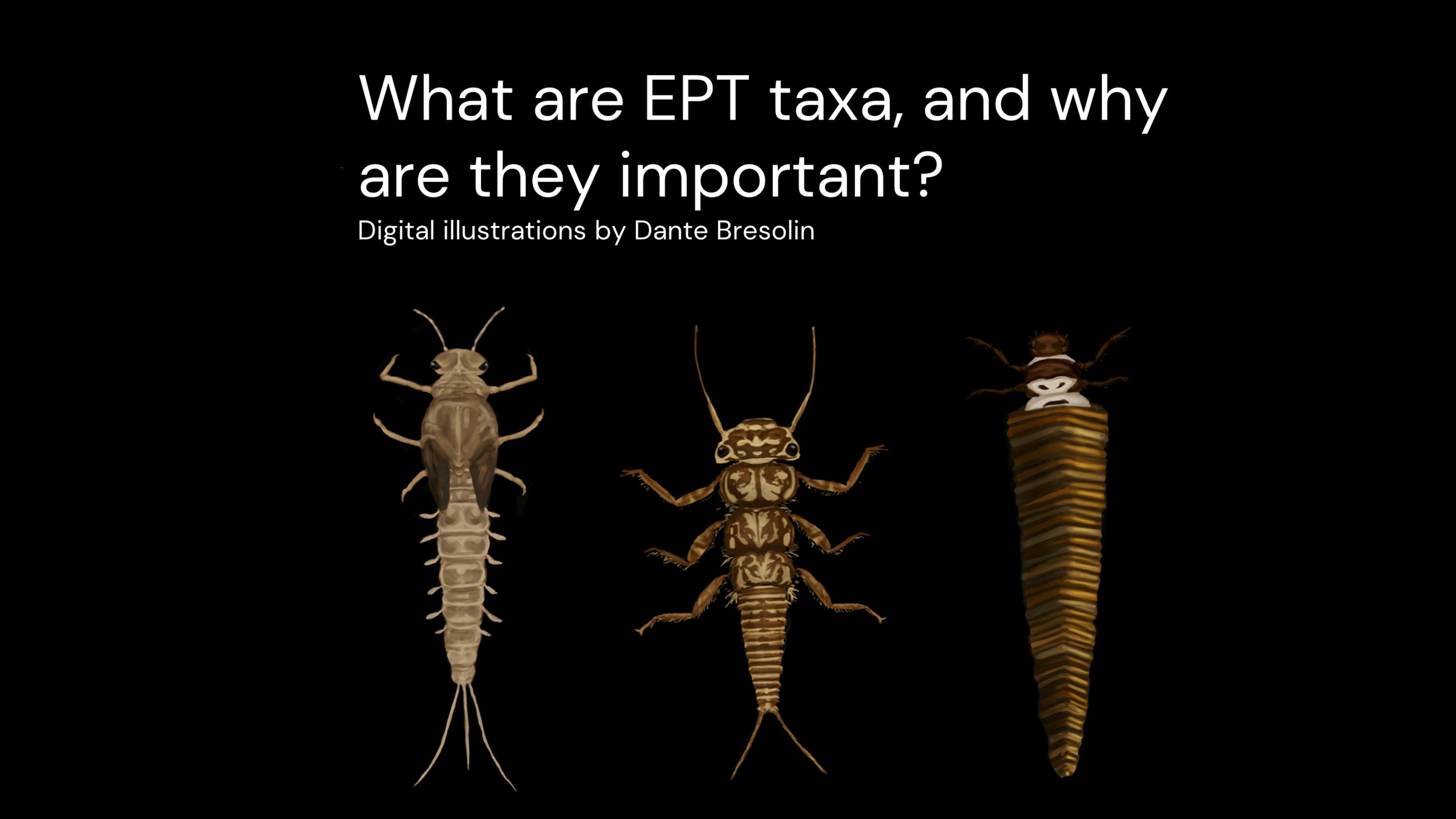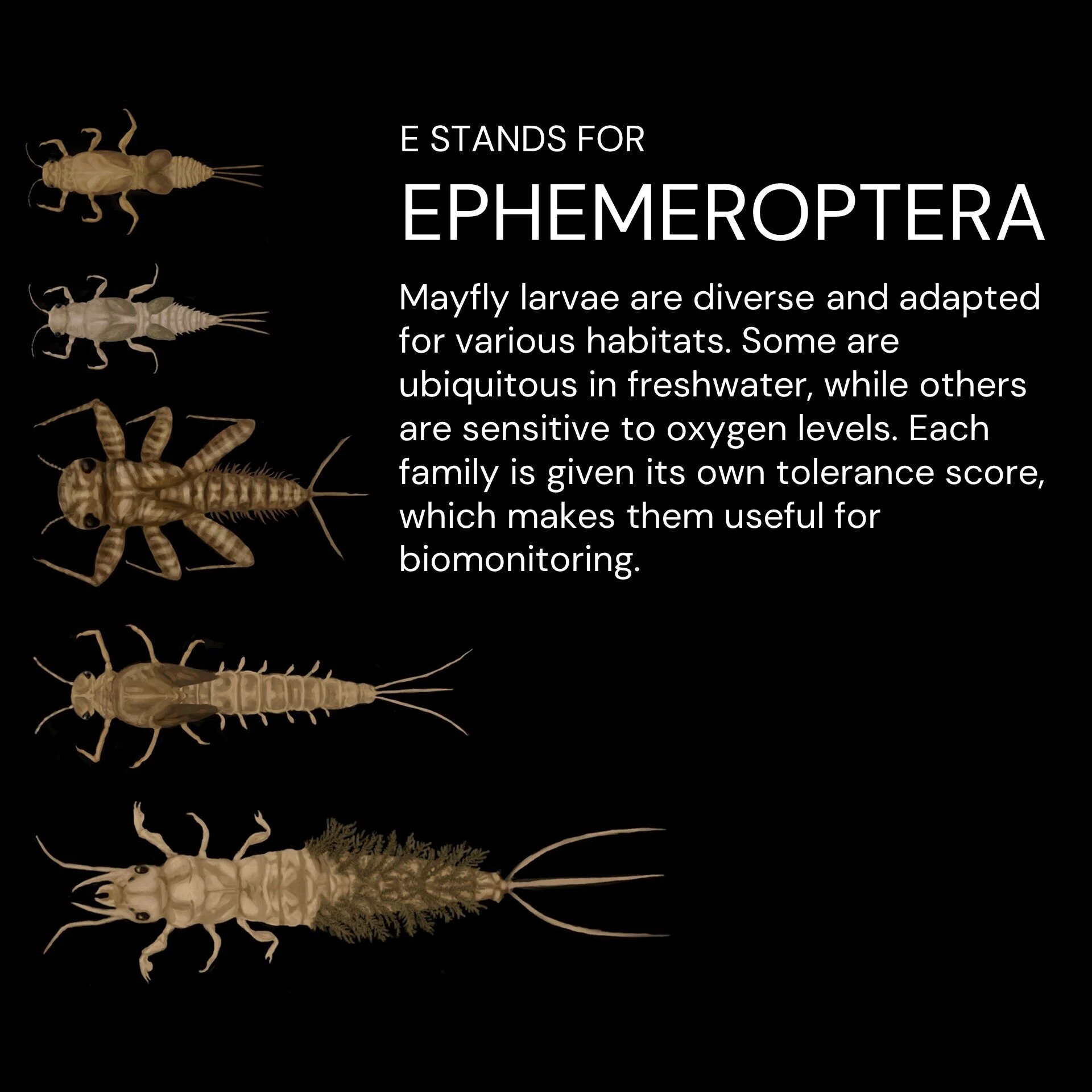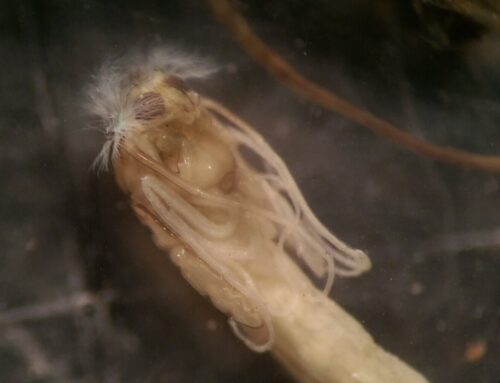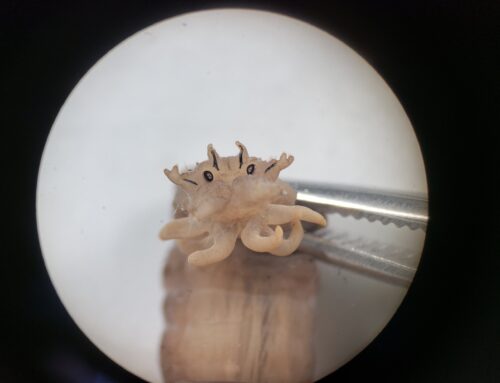When it comes to biomonitoring, there are three orders of insects that are especially useful – Ephemeroptera, Plecoptera, and Trichoptera, or EPT. Kudos to one of our undergrads, Andrea, for capturing their diversity with his digital illustrations!
Ephemeroptera, or mayfly nymphs, are probably the most common of the three, with some families seen in most stream samples. However, certain families like burrowing mayflies (Ephemeridae), are especially sensitive to low oxygen.
Plecoptera, or stonefly larvae, are much less tolerant of pollution; when our team samples any of these, we might assume it’s from a relatively healthy stream.
Finally, Trichoptera are caddisfly larvae, some of which build exceptional cases out of all sorts of materials. While they are the most diverse, many taxa are generally sensitive to environmental stressors.
Did you know that local Conservation Authorities collect, count, measure and assess these critters are part of their watershed report cards? Shout out to our partners at ERCA, St. Clair Region and CAs across the region who include EPT as part of their monitoring programs.
Most recent watershed report card from Essex Region Conservation Authority. View the full report here.










